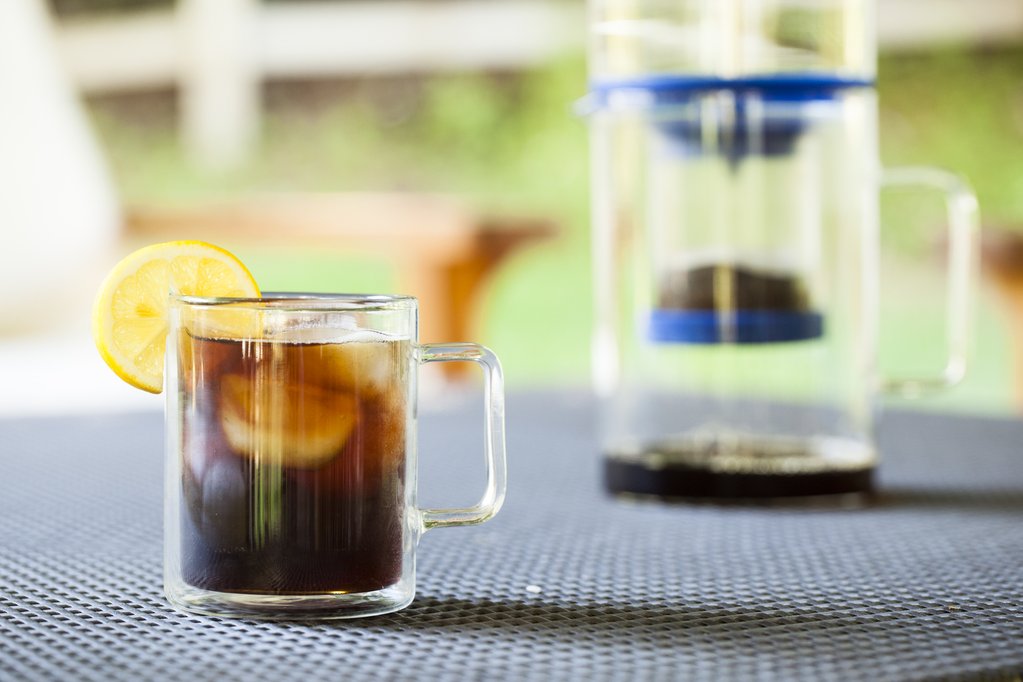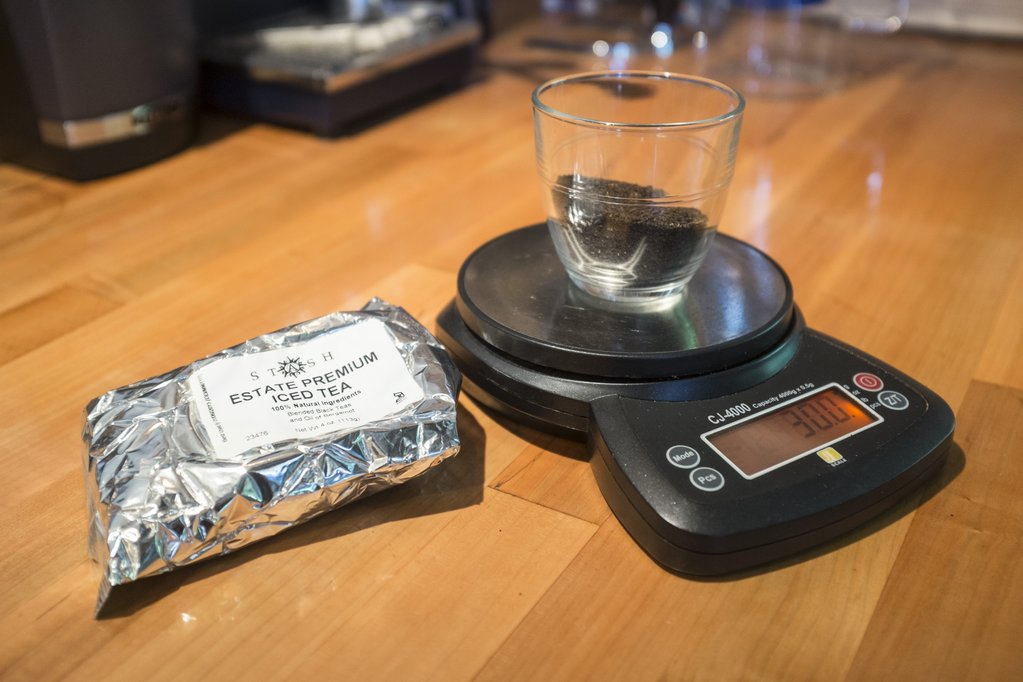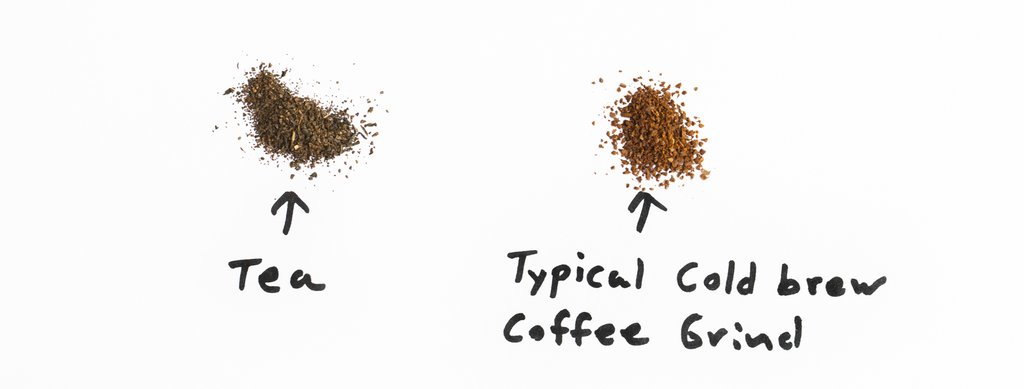

One of the coolest things about being involved in a Kickstarter project is the alternative uses of your project that community members come up with.
Could I use Cold Bruer for...
Botanical tinctures?
Infused alcohol?
Chemistry titrations?
Cold brew tea?
Looking back, the latter seems like a pretty obvious application, but being pretty devout coffee addicts, tea wasn't something we'd given a whole lot of thought too. While exhibiting Cold Bruer at the SCAA show in Seattle, we were given a handful of Stash Tea to try out in Cold Bruer. It was a perfect opportunity to begin some tea experiments.
For our first cold brewed tea attempt, we used Stash Tea's Estate Premium Iced Tea: It's a blend of black teas with oil of bergamot. I chose a brewing ratio of about 1 to 24, so we used about 30 grams of Stash's Black Iced Tea Blend, and 710ml (24oz) of ice/water. I've seen some loose leaf teas that have pretty large pieces of tea leaves, but this stuff looked very similar to the typical coffee grind setting we use for our cold brews. I wonder how important the tea particle size is to the brew...
I'd read about iced tea brewing ratios ranging anywhere from 1:60 to 1:24. I chose the more concentrated ratio because I was concerned that water could easily channel right through such a thin tea bed and leave it under extracted.




30 grams of tea doesn't look like very much at all in the tower, but after doing a pre-wet of 15ml of water, and setting the drip rate at about 1 drip per second, the tea bed swelled more than I expected and doubled in volume.
The brew finished 5 or 6 hours after we started, and I was really surprised at how dark the cold brewed tea was.
To show how dark it was, there's a mug of cold brew coffee on the left, and the mug of tea on the right.
Conclusion:
Initially, we drank the cold brewed iced tea just over ice. It was definitely concentrated, and the oil of bergamot reminded me a lot of Earl Grey. It was strong. A little too strong for a refreshing summer drink, so we ended up diluting it with about 1/3 water. A little dilution, and a squeeze of lemon made for a very refreshing iced tea!
These very encouraging results definitely warrant some additional experiments. I'm curious what the slow drip cold brewing method can bring to iced tea that other iced tea brewing methods can't (full-immersion seems to by the most prevalent method out there). I'm particularly interested in how the various brewing methods will influence the tannin content of the brew that gives that dry/astringent taste that is characteristic of black tea.
If you've thought about brewing iced tea with Cold Bruer, give it a go! We love the endless creativity of the Cold Bruer community, and would love for you to share your experiments with us.
Botanical tinctures or alcoholic infusions for the next blog experiment? Perhaps. But you can bet there will be some side-by-side comparisons of iced tea brewing methods in the future!